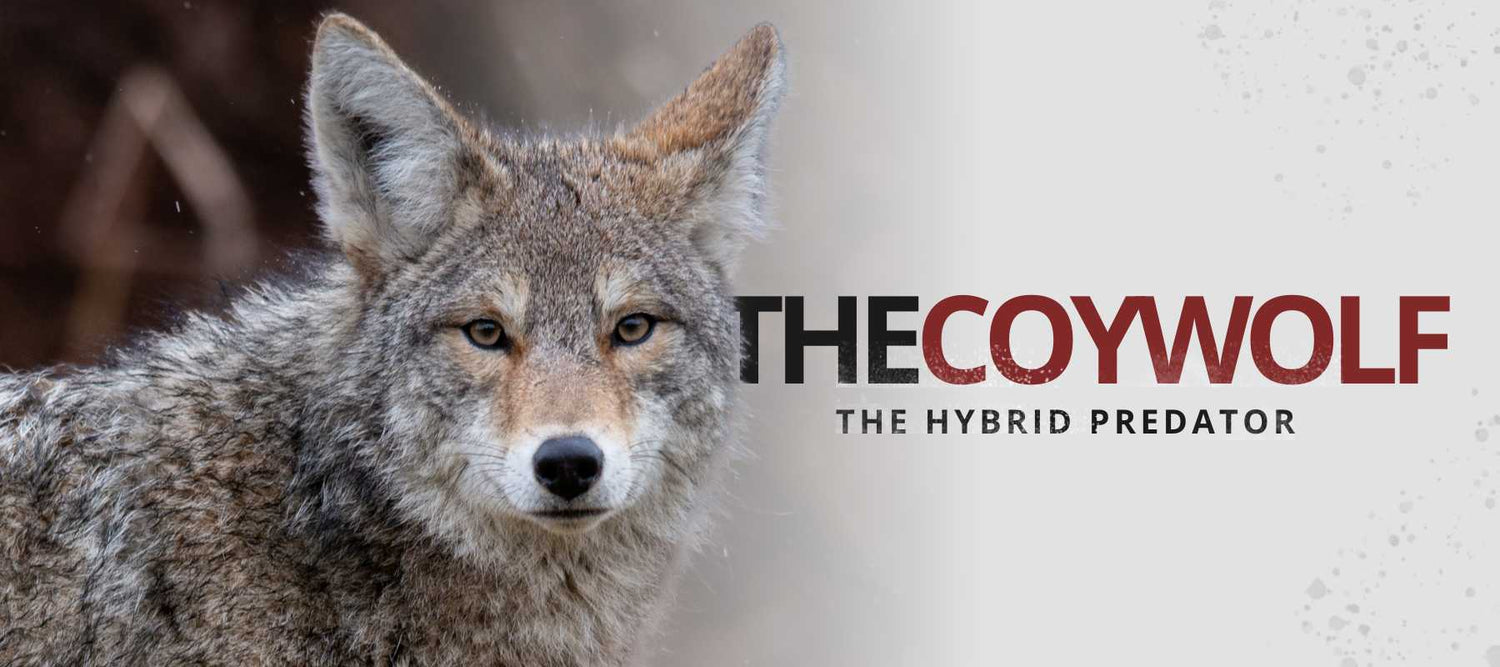The wild canids of North America have learned over thousands of years to adapt for survival, even if it means mating with each other. From these relationships was born a surprising animal: the coywolf, a hybrid combining the characteristics of the wolf and the coyote.
WHAT IS A COYWOLF
This carnivorous predator is a hybrid breed resulting from a cross between the wolf and the coyote. The coywolf is proliferating in our province and its number has been increasing steadily for the last 10 years. Scientists suggest it is the most adaptable mammal. It can find food in a variety of ecosystems. Coywolves, which look more like wolves, are also known to be unsuspecting in urban environments!

ORIGIN OF COYWOLF HYBRIDIZATION
Wolves and coyotes have different way of life and habitats, and the nature of wolves to attack and kill coyotes are reasons why hybridization between these two species is so amazing. The cross is believed to date back more than two centuries to the early 1800s.
According to scientists, it is mainly climate change, human activities such as deforestation, the eventual migration of its preferred prey, the human desire to exterminate it and the lack of sexual partners that led the wolf to mate with coyotes and dogs.
But this is not enough to explain the coywolf's existence. The mixing of animal species is rarely successful: most of the time, it gives birth to hybrids that are less vigorous than their parents, when they survive. Moreover, they usually cannot reproduce themselves.
But the combination of DNA from wolf, dog and coyote has produced an exceptionally robust result: a tenth of dog, a quarter of wolf and the rest of coyote is a recipe that works. An exception that led to the proliferation of these animals.
The main species of wolf that hybridizes with the coyote is the eastern wolf. Indeed, this hybrid would have 60% of the genetic profile of the coyote, 25% of the wolf and the remaining 15% of the dog.
At the beginning of the century, the coyote was only present in Western Canada. Following the changes brought about by the colonization and the almost total extermination of wolves, it headed east in 1920 and met the Eastern Wolf, a small population that had found refuge in Algonquin Park in Ontario.
This particular hybridization is natural and coywolves are fertile and have a life expectancy similar to that of their ancestors. These particularities differ from other hybrids which are generally sterile and in poorer health with a more limited life expectancy. Moreover, because of these crosses, today, 63% of Quebec wolves have coyote blood. According to Bradley White, a geneticist at Trent University, "when coywolves come to mate only with each other and differentiate themselves genetically enough from the wolf and the coyote, they will be considered a new species, and this is already taking shape.
DIFFERENCES COYWOLF VS COYOTE
The combination of wolf, dog and coyote DNA has produced a predator that is both robust and intelligent. It is fairly easy to distinguish because it has a larger head and jaw than the coyote, a closer set of teeth and longer, denser canines. Its body is more massive and its legs are longer and more muscular. In terms of weight, it would be about 40% heavier than the coyote whose average weight is 35 lbs. Its ears are less pointed and its tail is more furnished.
COYWOLF SIZE
The coywolf size can reach 4 to 5 feet in length. In comparison, the coyote can reach 3 ½ to 4 ½ feet and the gray wolf 4 ½ to 6 ½ feet.

COYWOLF DIET
Resulting from the hybridization of several species of canids, the coywolf has a more varied and omnivorous diet than wild wolves or coyotes. The coywolf feeds mainly on rodents and other small mammals. It also eats fruits and vegetables found mainly in gardens as well as digging through the garbage.
The DNA of wolves and dogs gives the coywolf some advantages over coyotes: with their larger jaws, more muscle mass and faster legs, they can kill a deer without any problem. A pack of dogs can even take down a moose. The animal is equally effective on the forest floor, whereas the coyote is not at all comfortable in wooded areas.
COYWOLF HOWL
The sound of the coywolf howl often begins with a low howl before moving on to the coyote's yip yip sound. A cross between a wolf howl and a coyote howl.
COYWOLF HABITAT
This mammal lives mainly in North America. In terms of population, it is estimated that there will be between 100,000 and 500,000 coywolf in Eastern Canada and more than one million in total in 2020. Indeed, this hybrid would be present notably in Ontario, Quebec and the Maritimes with a significant concentration in the Montreal, Toronto and Cape Breton Island regions.
Their evolution has thus been faster than most of those known by biologists.
Less intolerant to noise and crowds, the coywolf hybrid is even more adapted to city life than its three ancestors: it is estimated that there are about 20 of these animals on the streets and railroads of New York City.

COYWOLF BEHAVIOR
More adapted to the proximity with man and urban life, surely because of his canine hybridization, the coywolf is not afraid of man. However, like many wild animals, the coywolf will only attack if it feels threatened. It is therefore essential to respect these animals. As long as we don't feed wild animals and don't disturb them, they have no interest in becoming a threat to us. Here are some reminders and advice in case you encounter this animal:
What should I do when I meet a coywolf?
- Avoid feeding the animal, touching it, or photographing it up close.
- Move away from the area by backing away slowly while remaining calm.
- Avoid turning your back to run.
- If the animal displays aggressive behavior, make yourself look taller and make noise.
SUMMARY
The coywolf is the genetic result between a wolf and a coyote. This super predator has all the necessary characteristics to survive and adapt to any habitat. The current debate among biologists is whether this is a new "species". Are the genetic differences between wolves, dogs and coyotes sufficient to consider this hybridization as a distinct species?
Learn more about the subspecies of the wolf by discovering the British Columbia wolf.


